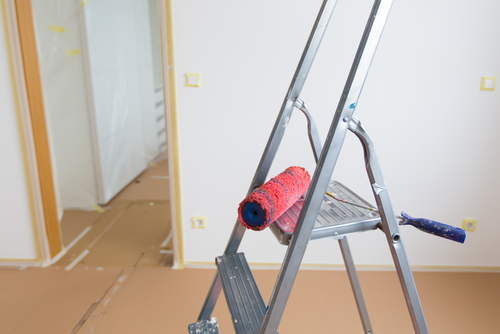10 Common Tax Mistakes Made by Property Investors

Property investing is a tried and true means of wealth building that delivers benefits to investors in terms of capital growth and tax reduction.
While we have no real control over investment property gains we do have control over what we claim on our taxes.
Unfortunately, many property investors either leave millions of dollars on the table that could have been used to grow their portfolios or they make erroneous deductions from a misunderstanding of tax law.
Are you making any of the 10 common tax mistakes?
1. Not claiming enough
You’d be surprised at just what the ATO allows you to claim.
Installed new smoke alarms or security systems lately? What about garbage bins?
Fixtures and fittings valued at less than $300 can be claimed within the first financial year.
Have you claimed everything you’re entitled to claim?
2. Believing your property is too old
Don’t automatically assume that your older investment property doesn’t have some depreciation in it left to claim.
While your investment property must have been built after 1987 to claim capital credits for structural elements (e.g. ceilings, floors, walls, etc.) it’s still possible to claim deductions for renovations completed after 1987, even if they were done by a prior owner.
Plant and equipment assets like hot water systems, stoves, carpets, etc. are deductible and should definitely be claimed.
3. Missing deductions after renovations
Items that have been scrapped after renovating as well as the items that are replaced can be deducted.
For example, if you discard tile and replace it with new tile or hardwood, the value of both the new and the old can be deducted.

4. Believing that once a return is lodged it’s gone
There’s a lot to consider when pulling together all of your tax information…it doesn’t hurt to have another look once you’ve filed.
If you’ve discovered that you missed claiming something, that doesn’t mean you’re out the claim as the ATO allows you to make adjustments to your two previous tax returns.
5. Claiming the purchase cost of the land in a construction investment
Improvements to the land, including structural improvements are deductible but not the cost of the land purchase itself.
6. Claiming costs where there were none
If you’re a DIY kind of person you probably do a lot of work yourself when you refurbish an investment property.
While you can save a lot of money this way, the fact is that your time and effort are not allowable deductions because you didn’t actually incur a cost.
Obviously the materials you purchased to complete the job are tax deductible, however your sweat equity is not.

7. Interest mistakes
If you’ve taken out a home loan to buy both an investment property and a new car, you’re not allowed to claim a deduction for interest paid on the personal part of the loan.
As you can imagine, this scenario can send up a red flag for the ATO to audit, hence the reason it’s always smart to keep your investment property loans separate from your personal.
8. Travel expenses
While it is permissible to claim travel costs to visit your investment property(ies) it’s not possible to claim then in connection with a personal vacation.
In other words, only the costs incurred that are directly related to visiting your investment property are deductible.

9. Allocation of rental expenses
If you rent out an investment property that you also use personally (e.g. a holiday home) you cannot claim rental expenses for the time that you are using it yourself.
10. Tax return preparation
Without question the tax structure can be complex. There are so many possible deductions, especially for property investors it’s not hard to miss one or more of them.
Why run the risk of losing out on potential gains that you can use towards your wealth building efforts? Enlist the services of a tax professional who is well versed in tax law surrounding investment property and preferably, who is an investor him or herself.
If you want to meet with like-minded people sharing the same interest for property investment, you should register to attend our next Property Investor Night.
At these FREE events held all across the country we discuss where the growth markets are right now, and share ways you can navigate your way to financial freedom through investing in property.
Seats fill up fast, so book yours now!

Successful Property Investors Don’t Quit Their Day Job
You need that income! One of the primary things you need to be a successful property investor is a job. Why? Because you need money. You need a job to borrow money. You need savings or some cash to buy your first property. But the sad fact is, a lot of people...
6 Ways To Speed-Up Your Next Property Purchase
Get There Faster If you are already a property investor with one or even two properties, first of all, congratulations. You’ve taken some seriously great steps in creating your future wealth and a pathway to a work-less, play-more retirement with passive...
Property investing: Five ways to create cashflow boom!
When it comes to property investment there are some things you can never have enough of.
When it comes to property investment there are some things you can never have enough of. Good tenants, reliable builders, a great relationship with your bank.
But more than anything what you need is good cash flow.
Having a steady income of cash means never having to dip into your own pocket to top up repayments, complete repairs or make another purchase.
Here are the top five ways you can ensure the cash keeps flowing, so you can keep your investment portfolio growing.
Lock it in! How to protect your equity
Don’t be caught without it.
As a property investor who is building a portfolio, it’s vital that you have access to your equity whenever you need it.
There’s nothing more frustrating than finding that perfect new property to purchase, only for it to be held up – or worse still, lost completely – because your finances weren’t in good shape.
Having an interest-only loan structure with a healthy off-set account is a great way to ensure you have equity at your fingertips whenever you need it, but that’s not the only way…



